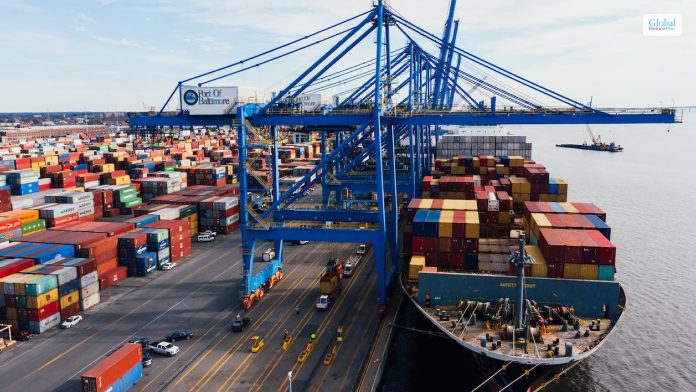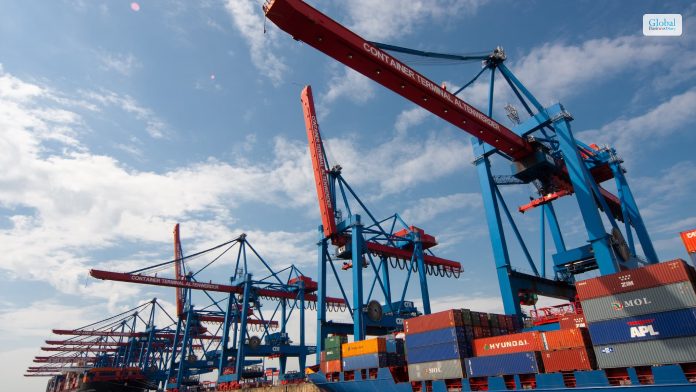What Is Free Alongside Ship? Essential Things To Know About It

In international business, Free Alongside Ship is a contractual term that is used in international exports most of the time. It stipulates the fact that the seller must make the arrangements for the delivery of the goods. The goods must be delivered to the designated ports. It must be next to the specific vessel for smoother transfer.
When contracts between the buyer and seller take place on an international contract, then these inco terms come into action. Free Alongside ship includes all the details like the time and delivery of the goods.
The payment due and which parties pay the cost of freight and insurance are all present in this contract. You need to understand the reality while you use this contract at the time of shipping.
Read More: BackMarket: A Complete Guide On It
What Is Free Alongside Ship?

“Free Alongside Ship” (FAS) is an Incoterm used in international trade. Incoterms are standard trade terms used globally to clarify the responsibilities of buyers and sellers. It includes the delivery of goods, costs, and risks involved in the transportation of goods between parties.
What Are The Obligation Of FAS For Exporters?

There are several obligations of FAS for Exporters. You need to be well aware of it while attaining your goals with complete ease. You must not make your selection and choices of the Inco terms out of the dark.
1. Delivery & Preparation For Export
The seller is liable for delivering the goods to the vessel at the named port of shipment. This includes ensuring that the goods are ready for export and placed at the specified point near the ship. You must make the proper preparation for the export to reach your goals with ease.
2. Export Customs Clearance
The seller must complete export customs formalities. It will help you to obtain any necessary export licenses or documentation and cover the costs related to export clearance. You need to get through the complete details to have a better idea of it. The custom clearance forms an essential part of free alongside ship. Furthermore, it can make the shipment process easier for your business.
3. Delivery Cost To Port
The seller covers all expenses and risks involved in delivering the goods to the named port of shipment. This includes costs such as transportation, packaging, loading charges, and any fees necessary to bring the goods to a specific location. Free alongside ships can help exporters get over these kinds of obligations with ease.
4. Risk Transfer
The seller’s responsibility ends once the goods placing is done beside the vessel at the agreed-upon port. From that point forward, the risk is transferred to the buyer, who assumes responsibility for the goods. The transfer of the risk will be easier, and it will reduce the overall burden on the team members. Try to follow the best process that can make the shipment process easier for you.
5. Export Duties & Taxes
The seller typically does not bear responsibility for export duties and taxes. However, they are responsible for any costs associated with the goods until they are placed alongside the vessel for export. The collection of the export duties and taxes becomes easier with the free Alongside Ship. It is one of the biggest obligations of this process to the exporters.
6. Notification To Buyers
The seller should inform the buyer once the goods reach alongside the ship. They need to provide the necessary documents or information to enable the buyer to take over the goods. It will help to arrange for their transportation, insurance, and any further handling. You must be well aware of the notifications that can bother you in the long run. Ensure that you follow the correct process from your end.
What Are The Obligations Of Free Alongside Ship For Importers?

Along with the exporters, it comprises several obligations for the importers of the goods as well. You need to be well aware of the facts while meeting your needs with ease. Ensure that you follow the perfect process in this regard.
1. Goods Arrival At Port
The buyer is liable for arranging and paying for the main carriage of the goods. Starting from the port of shipment to the final destination. This includes organizing transportation, handling, and any necessary logistics from the named port of shipment to the desired destination. It is the first kind of Free Alongside ship obligation a buyer needs to face. You need to understand the reality while attaining your aims.
2. Risk Assumption
Once the goods placed alongside the vessel are done at the specified port, the risk transfers from the seller to the buyer. The buyer bears the risk for any damage or loss that may occur after the goods are delivered alongside the ship. It is another important part of the obligation that the importer needs to take care of while considering free alongside ship.
3. Import Customs Clearance
The buyer is responsible for completing import customs clearance procedures and paying any relevant duties, taxes, and import fees. Obtaining necessary permits or licenses, and handling any other formalities required for bringing the goods into the country. You must focus on the import of customs clearance to make things easier for you in all possible manners.
4. Transportation & Insurance
The buyer arranges and pays for the transportation of goods from the named port of shipment to the final destination. Additionally, buyer is responsible for arranging insurance coverage for the goods during transit, ensuring protection against potential loss or damage. Transportation and insurance must go hand in hand. Otherwise, everything will become difficult for you in the long run.
5. Notification To Seller
It’s essential for the buyer to inform the seller once the goods you receive alongside the ship. They also need to provide any necessary documentation to confirm the acceptance and receipt of the goods.
Read More: What Is Mortgage Buydown? Essential Things To Know About It
Final Take Away
Hence, these are some of the core essential factors of Free alongside ship that you must be well aware of. You cannot just make your choices out of the grey. Ensure that you follow the correct process from your end.
You can share your views and opinions in our comment box. It will help us to know your take on this matter. Once you make the correct choices from your end shipment process will become easier.
Let’s Find out The Best Articles By Clicking Below!!













